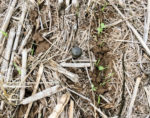Advertise Follow Us
Items Tagged with 'grazing cover crops'
ARTICLES
30 Years of No-Till Keeps Farm Financially Stable
Equipment Changes, Cover Crops Prepare Soggy Soils for No-Tilling
Efficiency, Diversification & Bold Cropping Strategies Put New No-Tillers Ahead
Even in a Serious Drought, Soil Never Rests on No-Tiller’s Farm
No-Till, Cattle & Diverse Cover Crops Mix Well
Focus on No-Till, Soil Health Puts Farm Problems Out to Pasture
Farming the Drought with No-Till Flexibility
No-Till, Cover Crops and Cattle Bring Revenue to Offset Tight Margins
PRODUCTS
Integrating a Diverse Rotation, Cover Crops and Livestock Into Your No-Till System - Darin Williams - NNTC 2016 Presentation - MP3 Download
Darin Williams wishes he had known about no-till and grazing cover crops when he decided to go into home building after college because he didn’t think he’d make it as a farmer in his community. But since he took up farming in 2010, Williams has been able to grow his no-till operation to 2,000 acres of non-GMO corn, soybeans, wheat, rye, triticale, winter barley and milo, and grazes his cattle herd on cover crops to maximize their investment. Williams also has a flock of sheep and recently added poultry. Considering organic matter to be king on his farm, the Waverly, Kan., no-tiller discusses the components that make up his no-till system, including why he tries to direct-market everything produced to consumers and how he marketed his grain for premiums in 2015.
View














